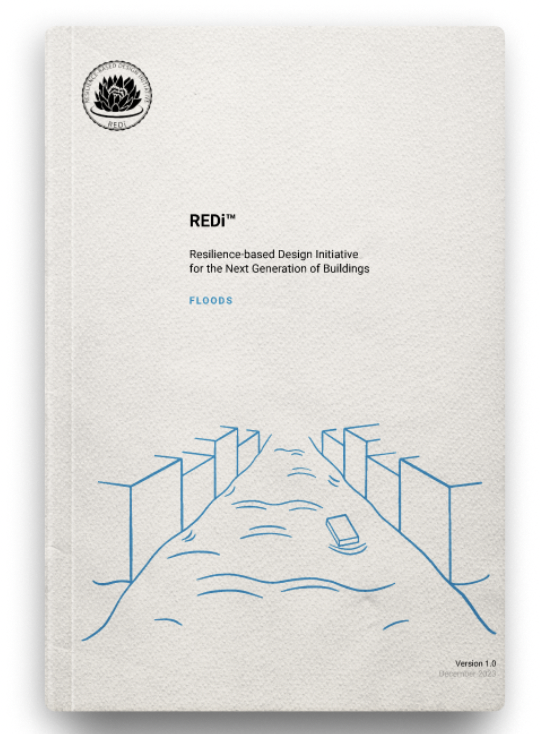
Arup unveils building design guidelines for flood recovery
January 18, 2024
By CCE
Consulting engineering firm Arup has unveiled Resilience-Based Design Initiative (REDI) for Flood guidelines, outlining strategies for combating and recovering from extreme flooding and sea level rise.
As the most recent edition in the firm’s suite of resilience guidelines for the built environment, the volume expands risk management measures to cover more hazards, with the goal of making resilient design standards more mainstream for engineers, architects and building owners. Other REDI editions have addressed earthquakes (2013) and windstorms (2022).
“We are providing designers and building owners a blueprint to achieve much greater confidence in protecting buildings and the core services within them,” says Arup principal Ibbi Almufti.
The newly released guidelines extend beyond existing code requirements to protect buildings and to help restore their functionality and occupancy quickly after flood events. By following their prescriptive design, planning and risk assessment criteria for equipment and utility connections, flood-resistant finishes and materials and other elements, structures can be better-prepared to withstand the growing frequency and intensity of flooding events resulting from climate change.
“REDi for Flood fills a critical gap in conventional building codes, which often neglect climate change and resilience measures, leading to unnecessary losses and excessive recovery efforts,” says Jack Hogan, senior climate change risk and resilience engineer with Arup.
The guidelines address several types of flooding hazards, including coastal (and sea level rise), stormwater (pluvial) and riverine (fluvial). A future 500-year flood is used as the basis of design. Impacts from related hazards—like levee failures and debris flows—are also considered.
The guidelines outline three rating tiers—Silver, Gold and Platinum—representing increasing levels of performance during and after flood events. Platinum- and Gold-rated buildings are designed to be relatively undamaged after major natural disasters, while Silver-rated buildings are expected to sustain some damage but are equipped with measures to hasten their recovery.
